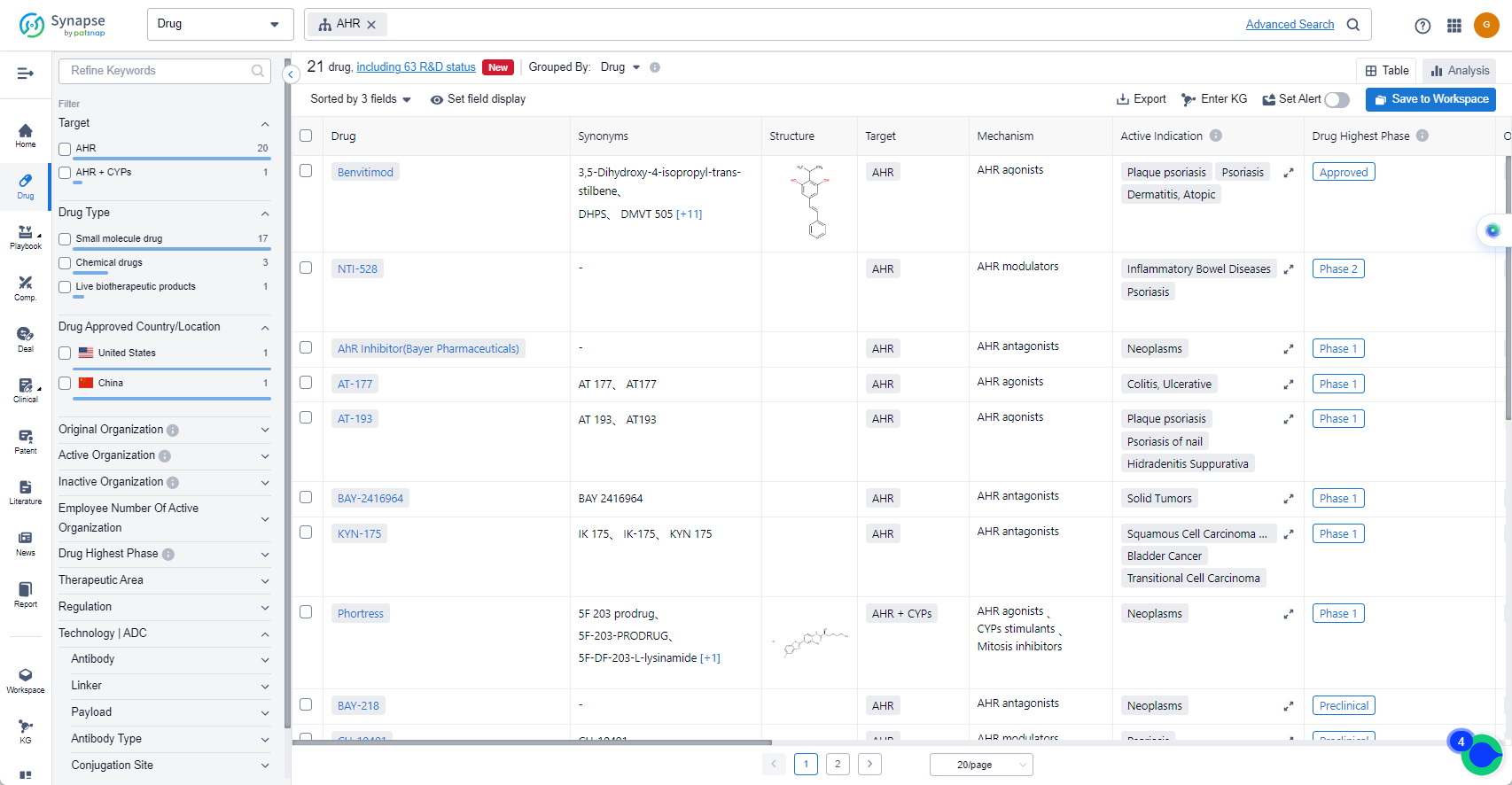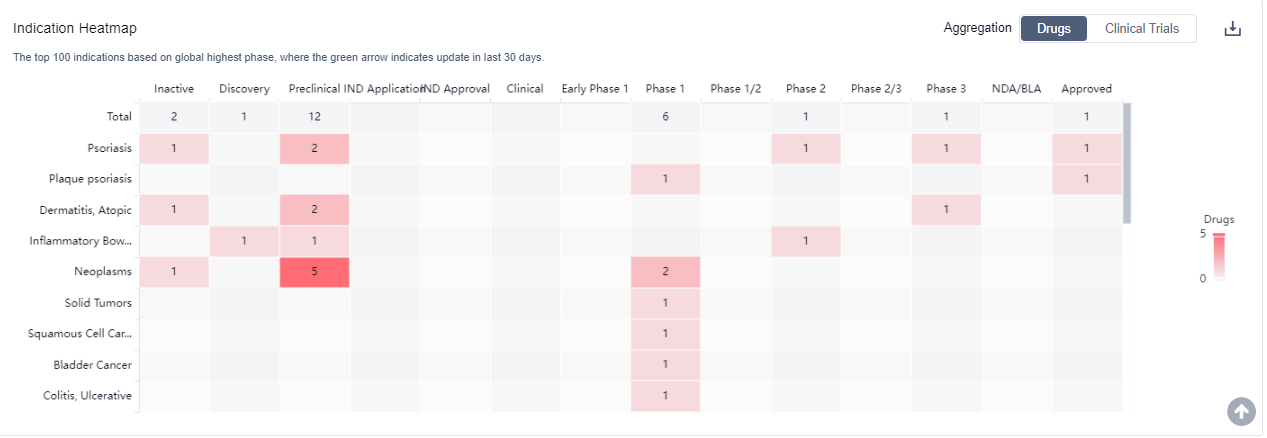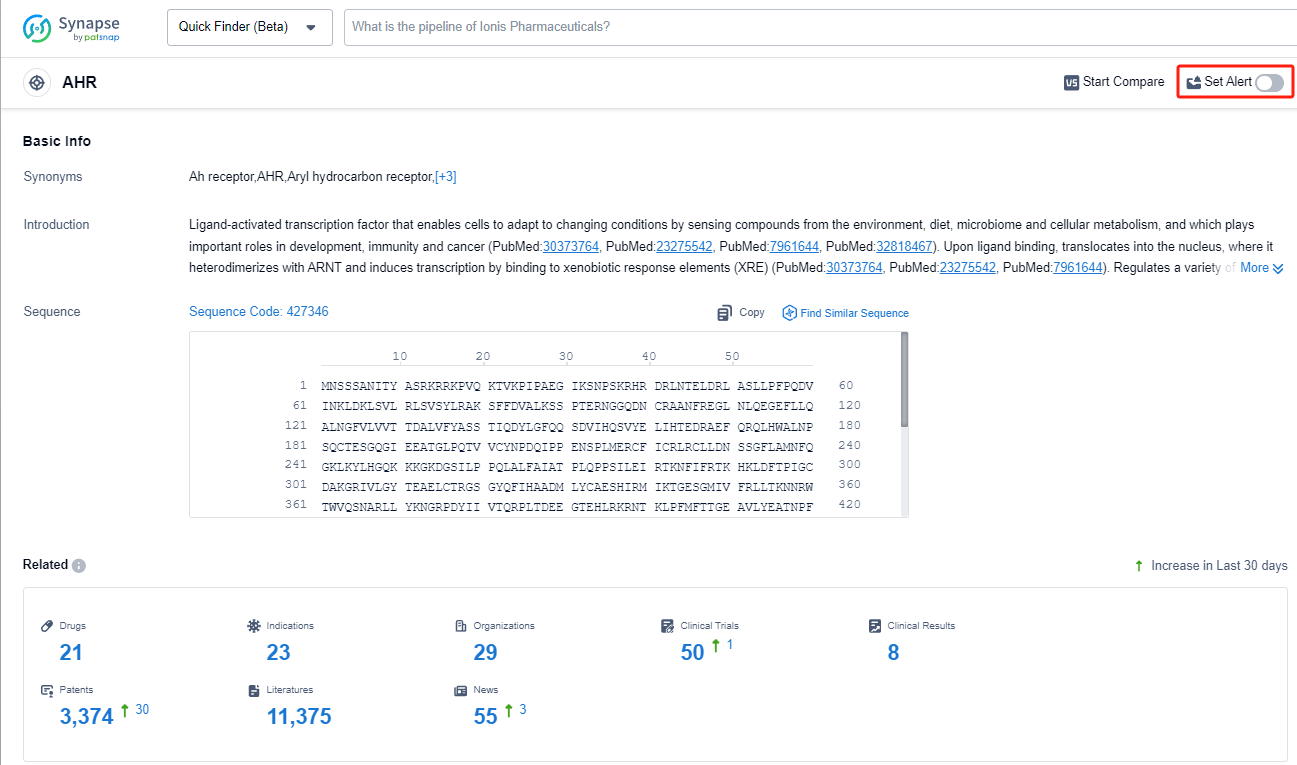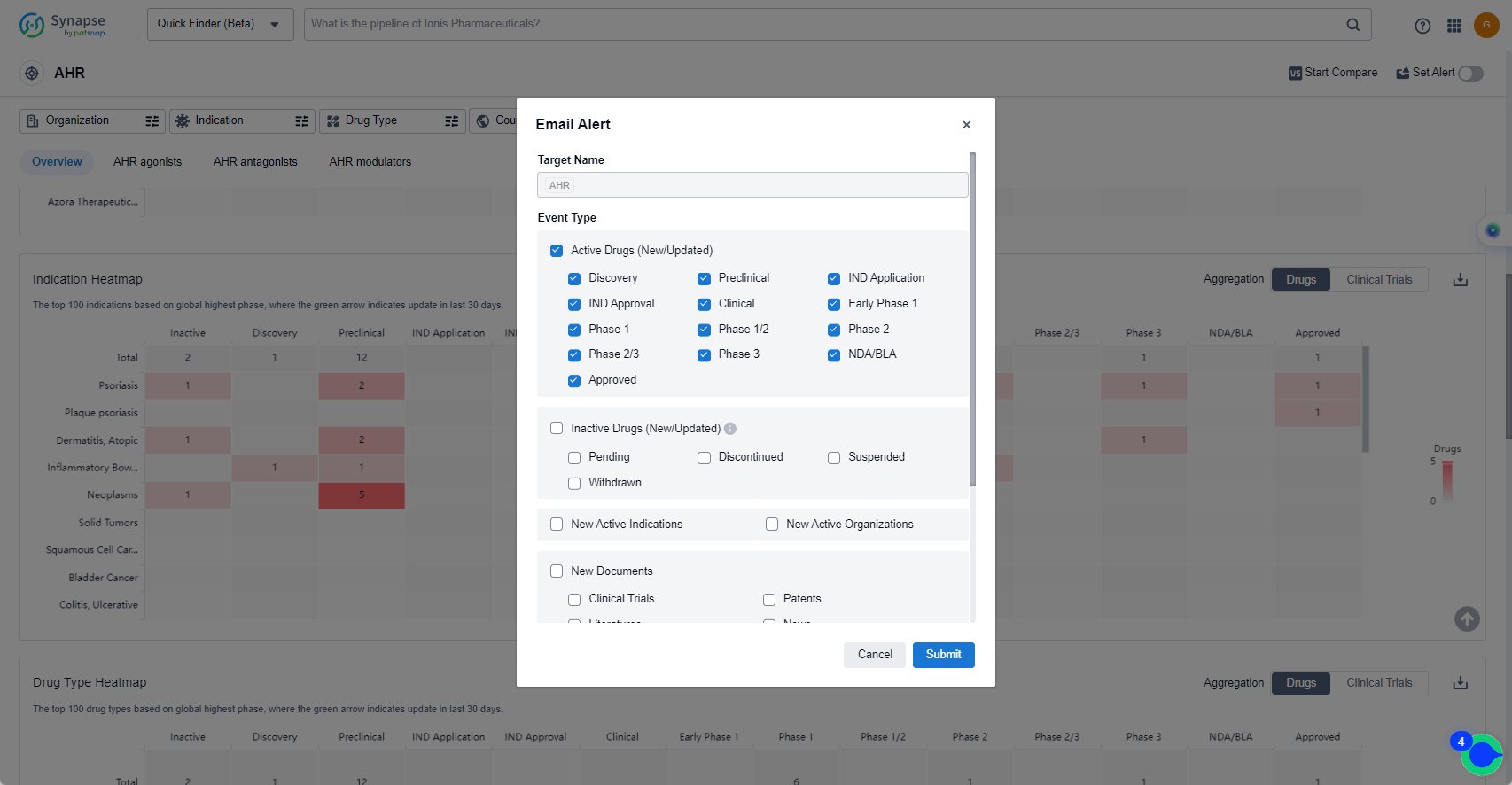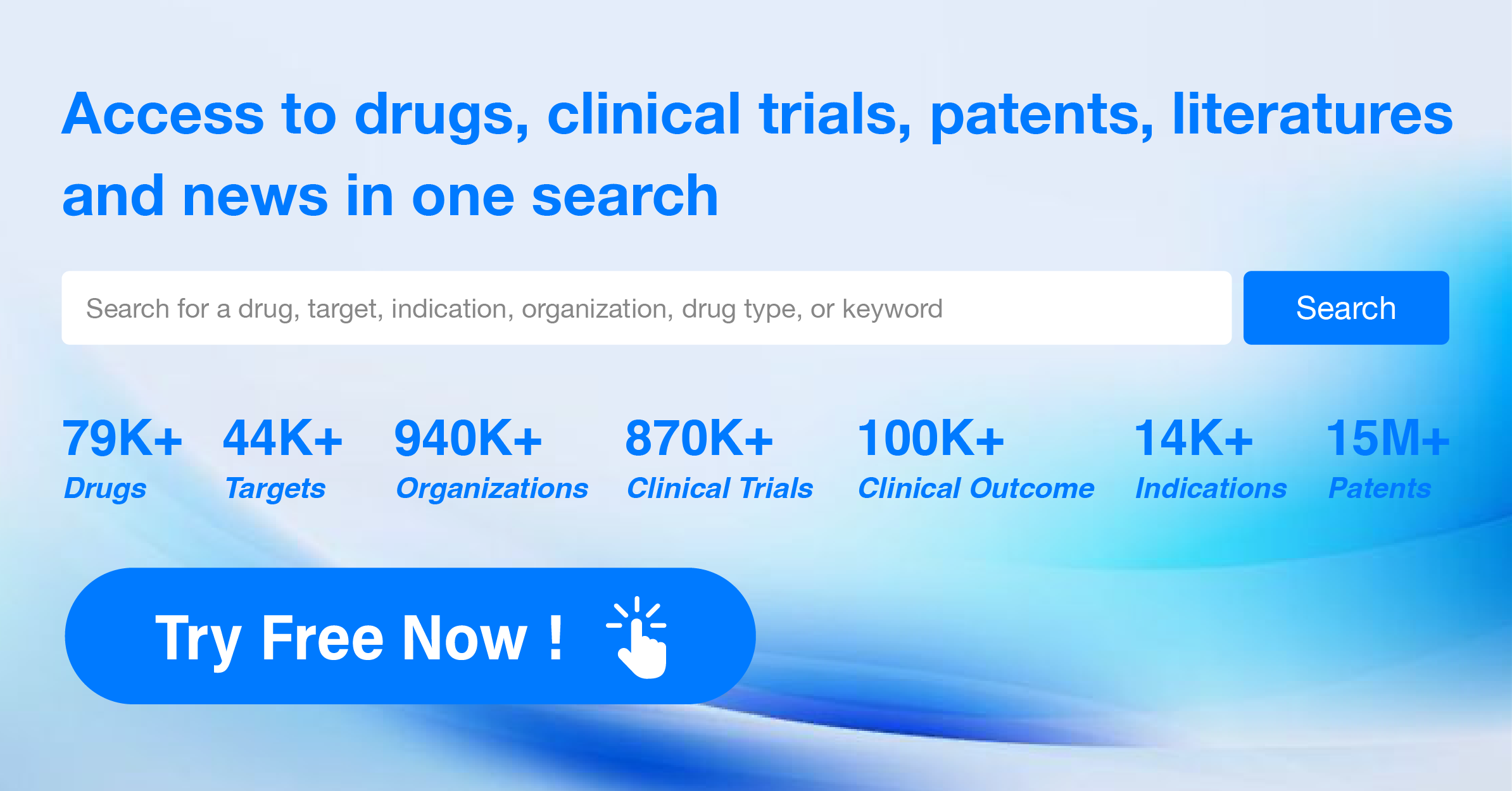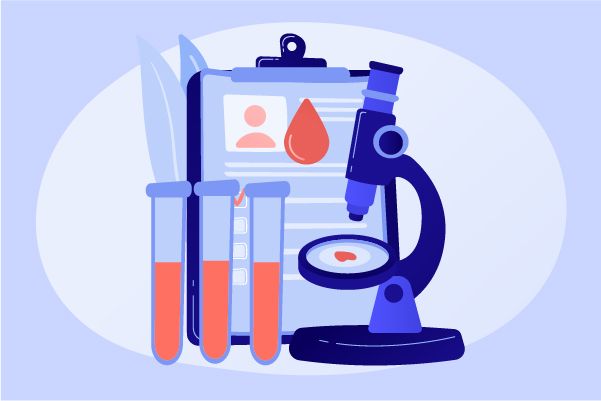What are AHR agonists and how do you quickly get the latest development progress?
The Aryl hydrocarbon receptor (AHR) is a protein found in the human body that plays a crucial role in various physiological processes. It acts as a transcription factor, meaning it regulates the expression of genes involved in metabolism, immune response, and cellular differentiation. AHR is primarily known for its involvement in the detoxification of xenobiotics, such as environmental pollutants and drugs. Additionally, it plays a role in the regulation of inflammation, cell growth, and development. AHR's diverse functions make it an important target for pharmaceutical research, as modulating its activity could have significant implications for various diseases and drug development.
AHR, as a sensor for cells to perceive the external environment, is highly expressed in barrier cells and some immune cells. The AHR signaling pathway has also been proven to be a key pathway in the regulation of the immune system. AHR agonists have shown effects in some representative models of autoimmune diseases, including systemic lupus erythematosus, Behcet’s syndrome, multiple sclerosis, and inflammatory bowel disease.
At the same time, due to the diversity of AHR agonists and the different effects produced by different agonists, there are more possibilities for the design of drugs that target the activation of the AHR signaling pathway.
The analysis of the target AHR reveals that Roivant Sciences Ltd., Guangdong Zhiguang Biotechnology Co. Ltd., and Shenzhen Tianji Pharmaceutical Co Ltd. are the companies growing fastest in this field. These companies have drugs in various stages of development, indicating their strong R&D progress. The approved drugs under the target AHR are indicated for various conditions such as psoriasis, dermatitis, inflammatory bowel diseases, neoplasms, and more. This suggests a wide range of potential applications for drugs targeting AHR. The drug types progressing most rapidly are small molecule drugs and chemical drugs. China has shown progress in the development of drugs targeting AHR, along with other countries such as the United States, Canada, European Union, and Germany. Overall, the target AHR presents a competitive landscape with potential for future development in various indications and drug types.
How do they work?
From a biomedical perspective, AHR agonists refer to a class of compounds or substances that activate the aryl hydrocarbon receptor (AHR) in the body. The AHR is a protein that acts as a transcription factor, meaning it regulates the expression of certain genes. AHR agonists bind to the AHR and trigger a series of cellular responses.
The AHR is primarily known for its role in mediating the toxic effects of environmental pollutants, such as dioxins and polycyclic aromatic hydrocarbons. However, recent research has uncovered that AHR also plays important physiological roles in various biological processes, including immune regulation, inflammation, and metabolism.
By activating the AHR, agonists can modulate the expression of genes involved in these processes. This can have therapeutic implications, as AHR agonists have been investigated for their potential in treating various diseases, such as autoimmune disorders, cancer, and metabolic disorders. Additionally, AHR agonists have been studied for their ability to enhance the immune response against certain pathogens.
It is worth noting that the development and use of AHR agonists as therapeutic agents are still in the early stages, and further research is needed to fully understand their mechanisms of action and potential clinical applications.
List of AHR Agonists
The currently marketed AHR agonists include:
For more information, please click on the image below.
What are AHR agonists used for?
AHR agonists are used for various diseases, such as autoimmune disorders, cancer, and metabolic disorders. For more information, please click on the image below to log in and search.
How to obtain the latest development progress of AHR agonists?
In the Synapse database, you can keep abreast of the latest research and development advances of AHR agonists anywhere and anytime, daily or weekly, through the "Set Alert" function. Click on the image below to embark on a brand new journey of drug discovery!
